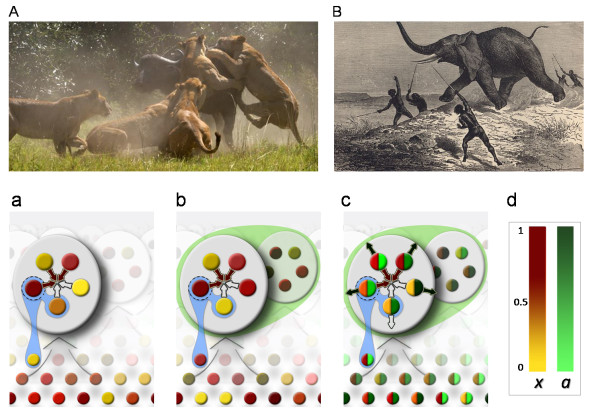Figure 1.
The schematic representation of the relationships between the different units in the different model scenarios. Lion hunting groups (A) and human hunters (B) successfully trap large preys by encircling it, that solitary or few individuals would be unable to do so. The presented model based on these remarks, where individuals are represented by the coloured circles, which indicate their trait composition (a-c). The individuals' location in the population can be fixed in the spatially explicit model, or individuals can disperse randomly in the well-mixed model. The group (big grey circle) is composed of individuals existing at a location of certain size at that moment (grey arrow). Individuals make their contributions to the group hunting effort (small green arrows), and receive the payoff according to the rules of the game. (a) Individual competition only. A randomly chosen focal individual (dashed circle) competes either with one of its group mates in the spatially explicit model, or with a randomly picked individual from the population in the well-mixed model (blue shadings). (b) Individual and group competition. Individual competition as before, and after the focal group competes with either a neighbouring group or a random group from the population (green shading). (c) Individual and group competition with voluntary participation in the both of the group actions, such as the cooperative hunting and the competition between groups for territories. (d) In the last case individuals have two continuous traits which determine their propensity to participate in the group actions, x for the Public Good Game, and a for the group competition game, both between 0 and 1. (pictures from: classicafrica.com; gtemporium.wordpress.com).

